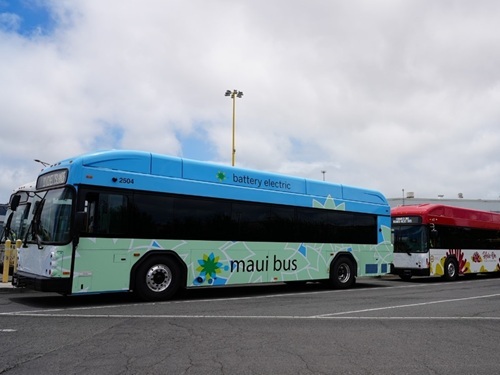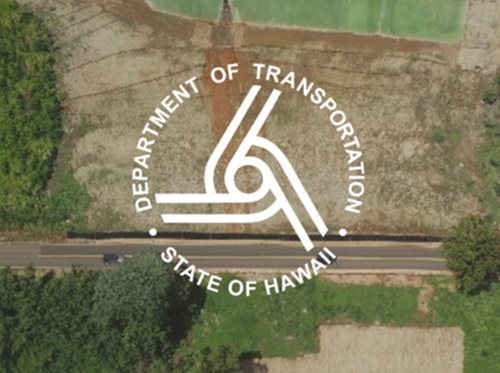The Hawaii Department of Transportation has partnered with four island counties to help deliver a dozen all-electric, zero-emission buses that are projected to reduce greenhouse gas emissions by more than 17 tons over their lifecycle.
[Above photo by Hawaii DOT]
The buses, which collectively cost $16.6 million, are headed to Kaua’i, Maui, and Hawai’i Island and will replace similar diesel-powered units. All Hawaii counties have pledged to convert their entire bus fleets to renewable fuel power by 2035, noted Hawaii DOT.
Hawaii DOT helped pay for those buses with $11.2 million from the Federal Transit Administration’s “Low or No Emissions” grant program and the agency’s “Buses and Bus Facilities” formula program. The Hawaii State Energy Office chipped in $3.53 million as well from the Volkswagen Settlement fund, with the four counties contributing the rest.
Charging stations already have been installed with separate federal grants, so the buses are ready to go into service right away, according to Shelly Kunishige, communications manager for the Hawaii DOT.
The agency said that each EV bus can reduce oxides of nitrogen emissions by 1.445 tons over its lifetime compared to a similar diesel-powered vehicle. For 12 buses, that amounts to 17.34 tons of emissions.
Hawaii Governor Josh Green (D) touted the buses’ environmental virtues in a Hawaii DOT news release, but he also touched on how the buses “will provide our residents and visitors with additional transportation options that will help keep our communities connected.”
The bus purchase is aligned with Hawaii DOT’s new “Energy Security and Waste Reduction Plan,” a blueprint for the department to help meet the state’s goal of reducing the level of emissions measured in 2005 by 50 percent in 2030. Hawaii DOT recently extended public comment on that plan through August 31.
The EV buses “further our commitment to the reduction of greenhouse gas emissions,” Hawaii DOT’s Kunishige said. “We also have pledged to build out our multimodal infrastructure in the next five years so people have a choice to walk and bike safely to their destinations,” she added.
Kunishige noted that Hawaii is second in the nation behind California for EV adoption in the public fleet, adding that Hawaii DOT is in the process of converting its light-duty fleet to EVs while building out the charging network.
The agency also recently implemented a Road Usage Charge or RUC for light-duty passenger electric vehicles or EVs on July 1, following a federally funded three-year research and demonstration project in concert with authorizing legislation passed in 2023.




